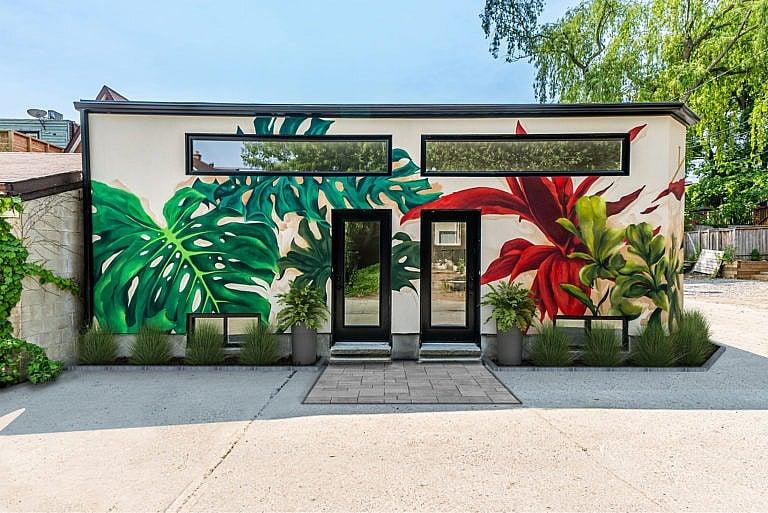Multiplex makeover: From a single-family downtown Toronto dwelling to 10 rental units
Toronto just loosened its zoning rules around multi-unit dwellings. Multiplexes like this one could make renting in the city more affordable.

Share

In 2019, Toronto architect Craig Race received a whopper of a proposal: convert a single-family home into 10 rental units. The ask came from real estate developer Leonid Kotov, founder of GreenStreet Flats, a construction firm that focuses on small-scale residential developments. GreenStreet had purchased a 2,000-square-foot, three-bedroom, two-bathroom house on Howland Avenue, close to Casa Loma. The company’s ambitious plan for the three-storey residence—which occupied one half of a double-wide lot—was to divide the interior into four apartments, build an exact replica on the left side of the property, then tack on a laneway suite out back.
To Race, all that construction sounded like the easy part. The real challenge with making multiplexes in Toronto circa 2019 was red tape. Conversion of this sort required an onerous application process with the City’s Committee of Adjustment, one that exposed applicants to appeals from neighbours and frequently resulted in construction plans being outright scrapped. “We would rarely receive requests to build apartments with more than three units because very few developers had the patience for them—many neighbours weren’t keen on new residents crowding their street, which was a shame,” says Race, who had completed roughly a dozen such multiplex conversions prior to the Howland project. “I thought then, and still do now, that more multiplexes would make living in this city far more affordable.”
As predicted, the Howland project eventually got the city’s stamp of approval, but not before being delayed by what Race calls “lengthy and specious” appeals from neighbours. Complaints ranged from the building’s deviating from the area’s majority single-family aesthetic to worries about street parking and its impact on laneway traffic. The project’s construction finally resumed this past May, when the City of Toronto loosened its zoning bylaws, newly permitting the construction of as-of-right multiplexes containing up to four units—no committee oversight (or neighbourly nuisance) involved.
Once the multiplex makeover was underway, the first objective was to gut the existing house down to its bones, build an addition into the backyard and section the home into four 800- to 1,000-square-foot, two-bedroom apartments: one in the basement, one on the main floor and two upstairs. The team also fully greened the home, wrapping it in continuous insulation and installing a high-efficiency HVAC system—additions that reduce the home’s average energy consumption by 40 per cent. The team mirrored all the specs on the home’s left side, then added an 800-square-foot stucco-covered laneway suite, with two bedrooms and a bathroom.

Aside from its multiple mailboxes and four visible front doors, the multiplex blends in seamlessly with the rest of the neighbourhood. The laneway suite features a pop of personality: a flowery mural painted by Toronto street artist Chris Perez, one of Race’s favourite parts of the whole property. “Laneway suites often get tagged in this area,” he says. “There are two ways to deal with that: buy expensive graffiti-proof cladding material or just tag it yourself.”
Not counting the litany of appeals, the Howland multiplex took 16 months to complete. Race says that since Toronto’s bylaw change back in May, his firm has been approached by many small and medium-sized developers who want to undertake their own house conversions, not counting the dozen multiplex projects currently in development in various neighbourhoods around Toronto. (Some are on lots as narrow as 15 feet.) Race says builders are particularly drawn to the fourplex-with-laneway-suite model—or, in developer-speak, “The Four Plus One”—because of how quickly they can come together.
Race, Kotov and their teams put the finishing touches on the multiplex earlier this summer, then listed each of the 10 units between $2,500 and $4,180. The property will be fully tenanted by October 1 by a diverse mix of residents that includes students, couples and young families. “The idea was to create five units that appealed to a broad spectrum of renters—people who need a rental but have struggled to find available, quality units in the city,” he says. Race predicts that it won’t be long before larger developers produce multiplexes by the hundreds across the country, filling what he calls “the missing middle.”